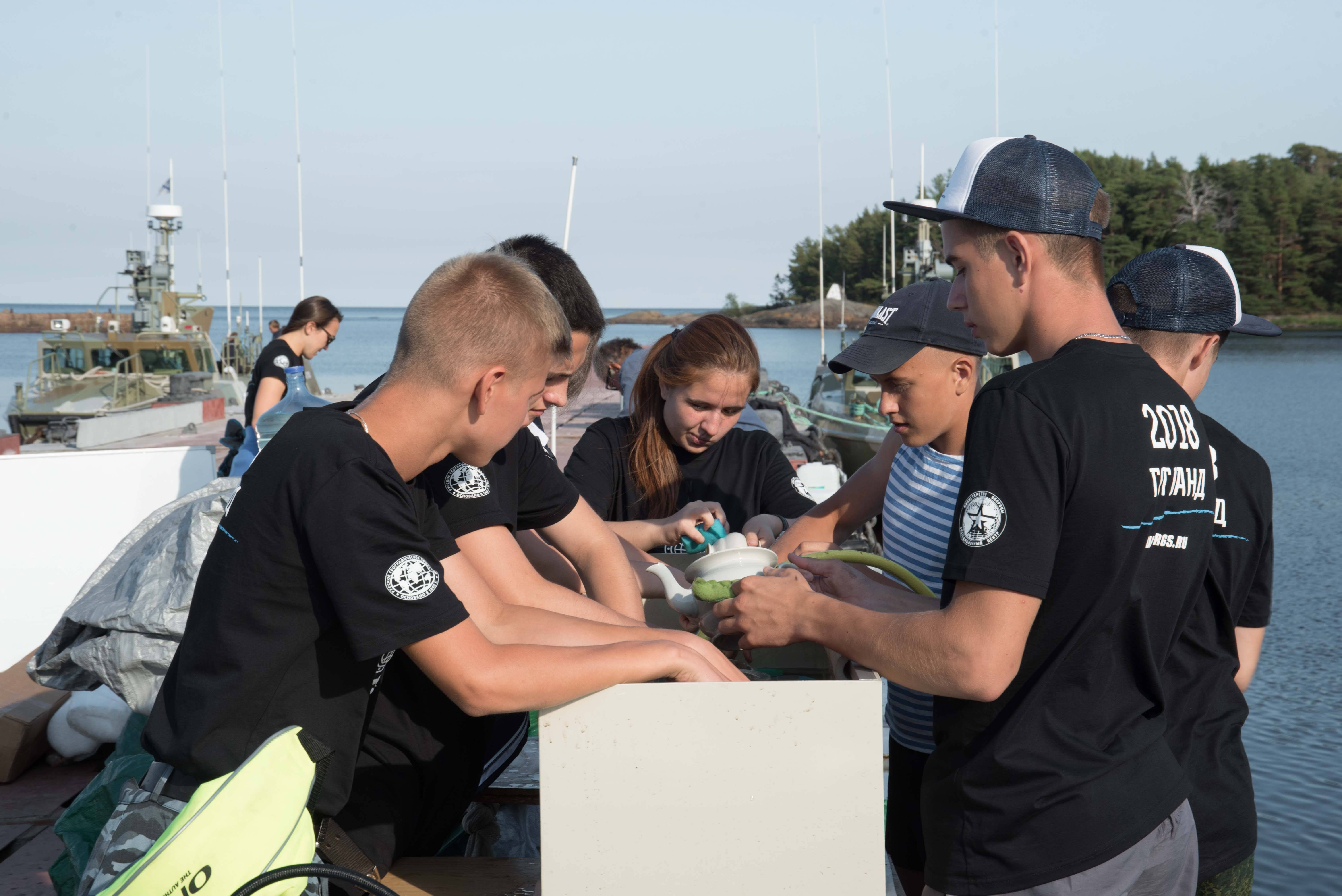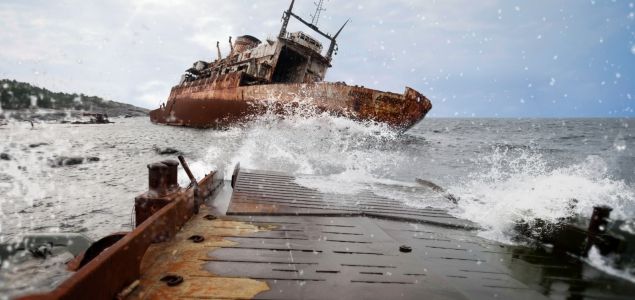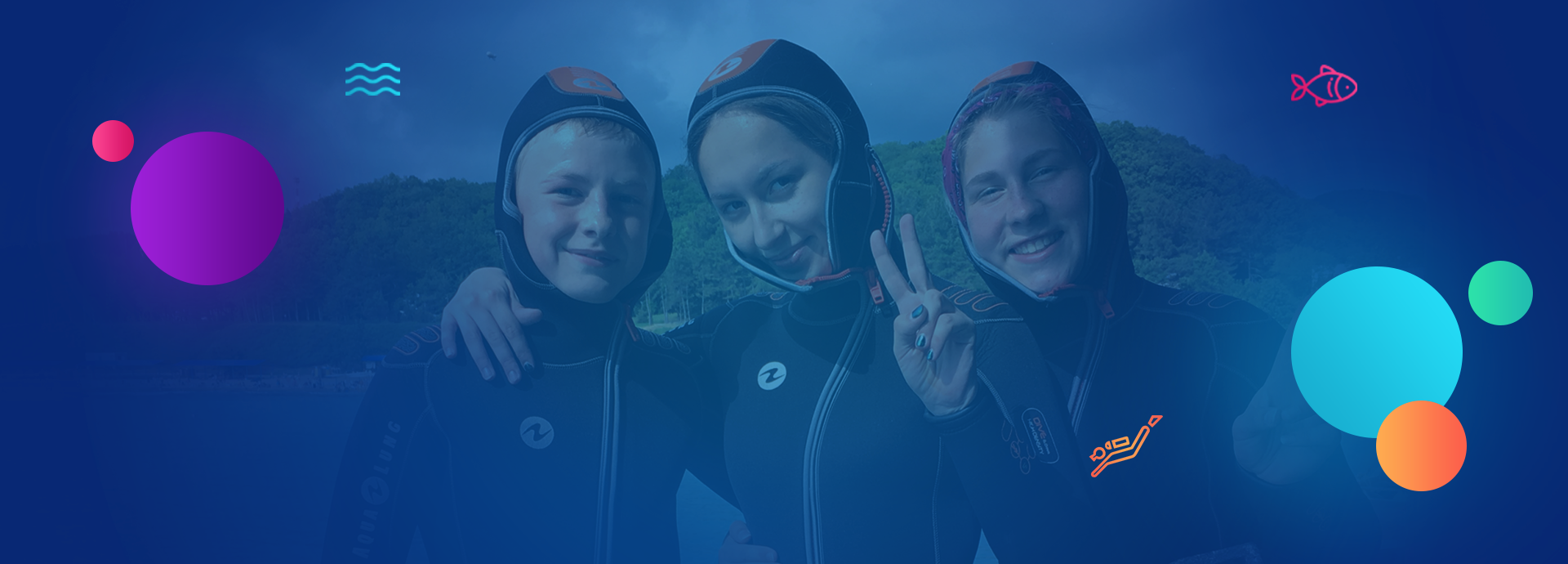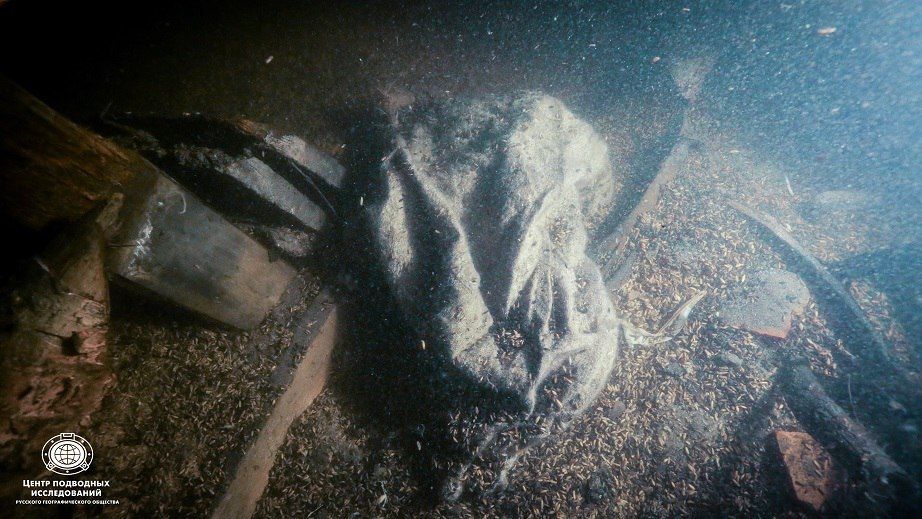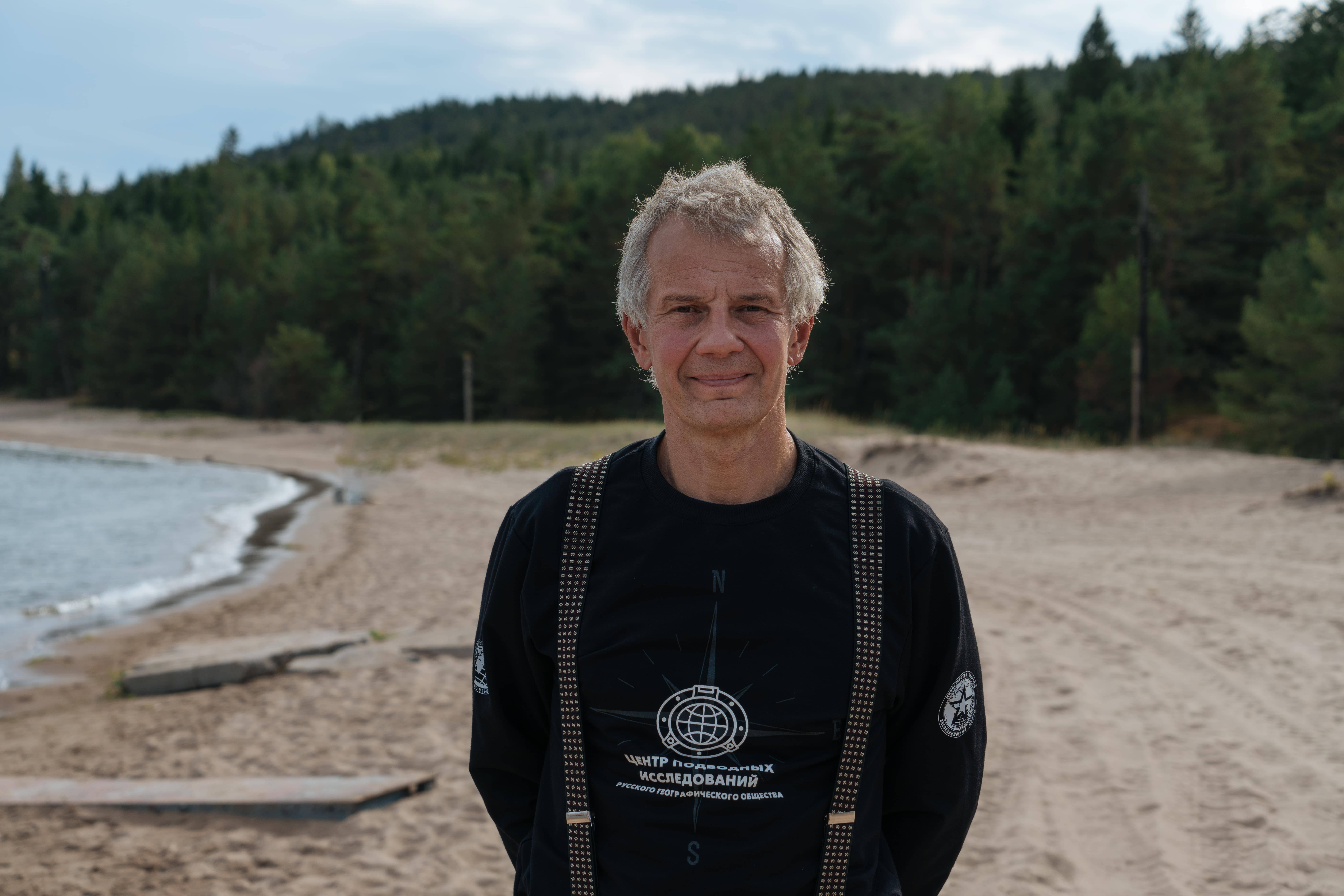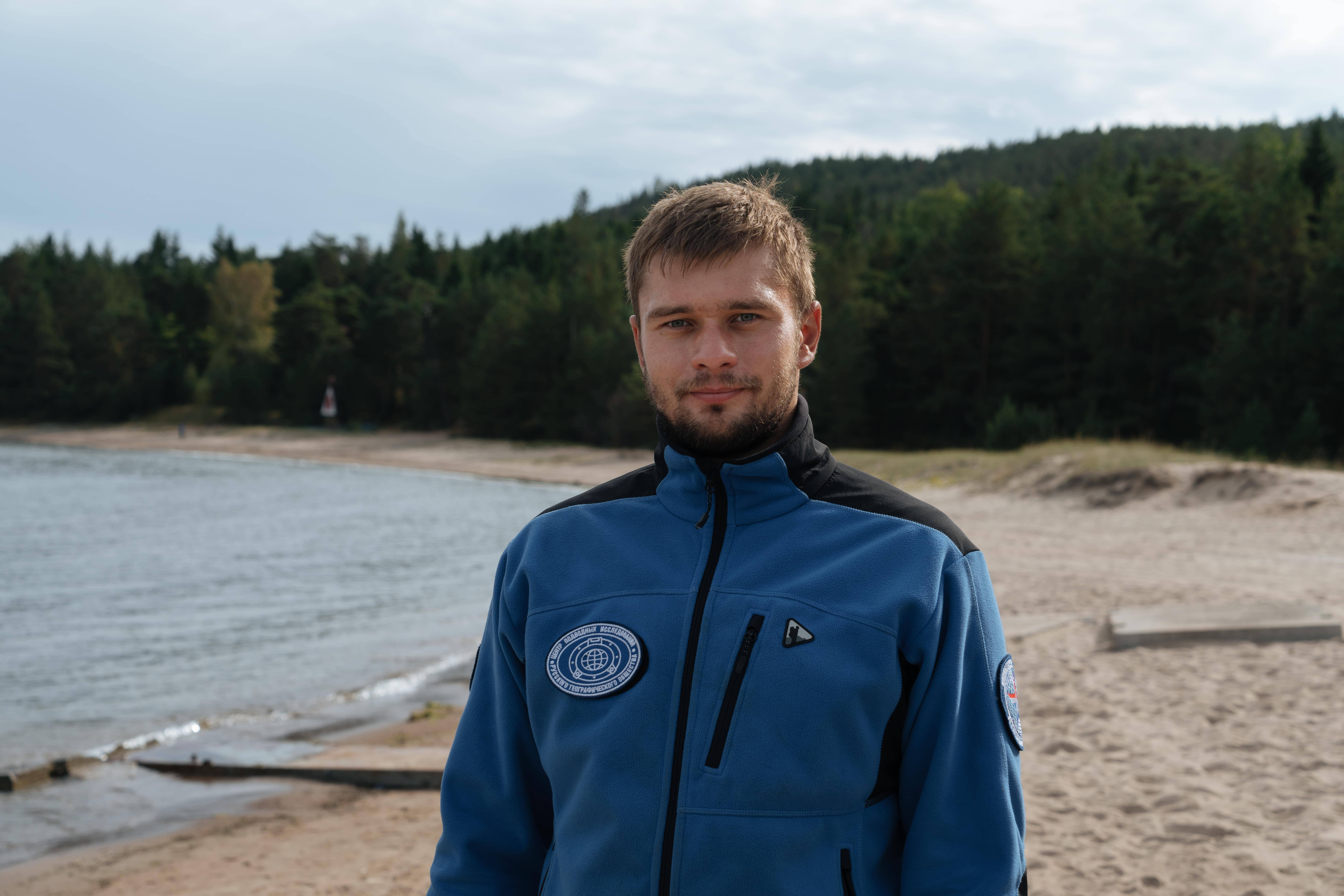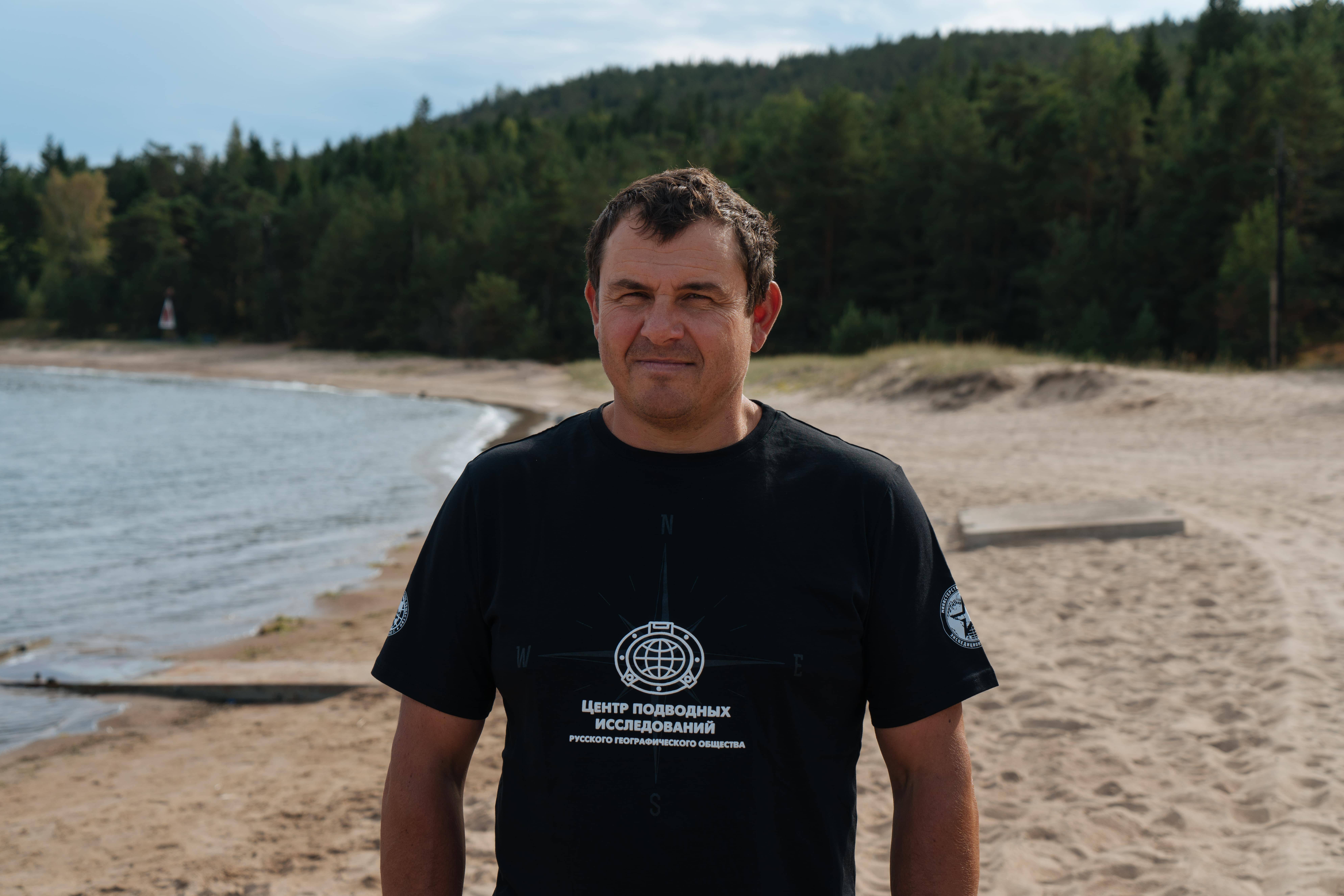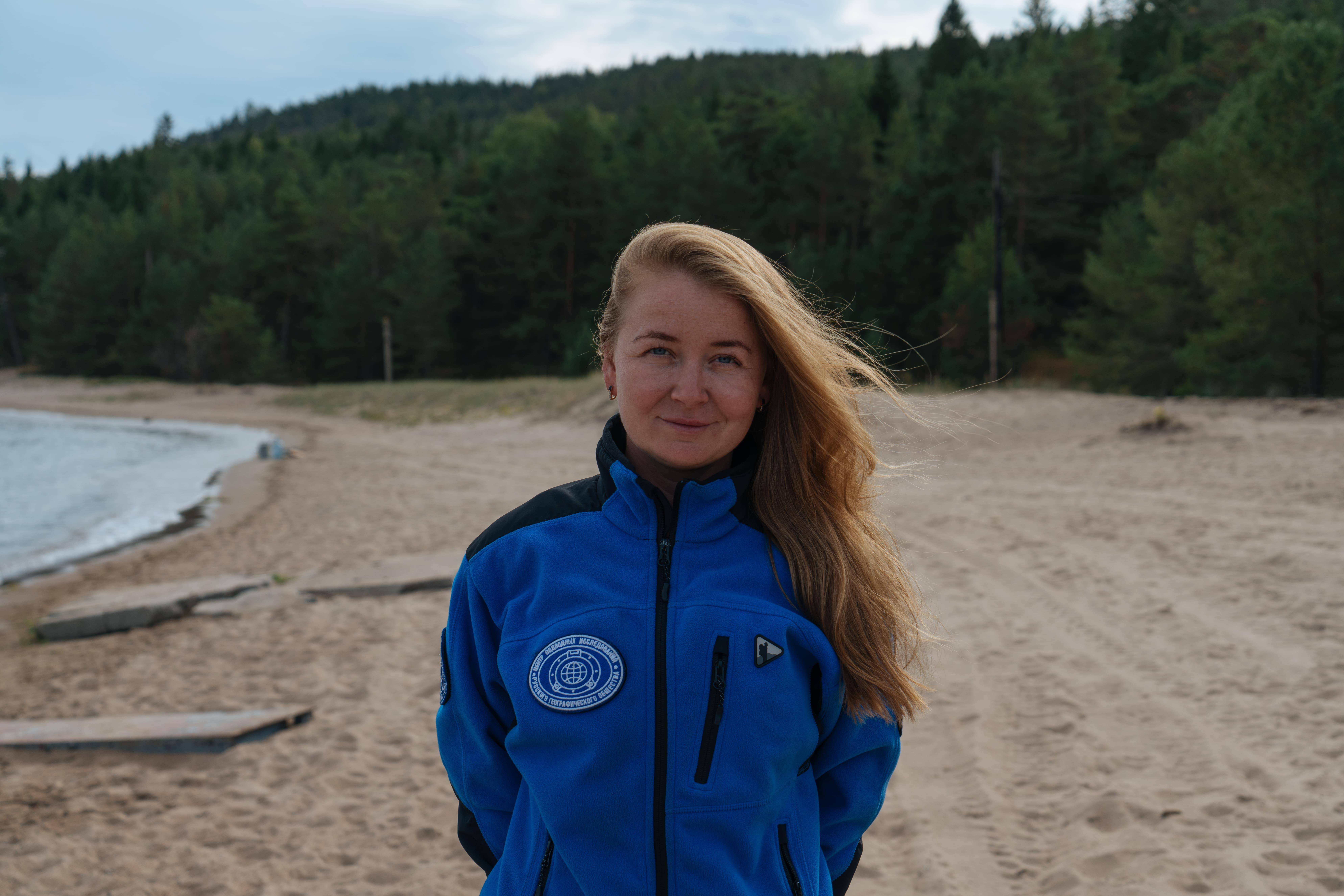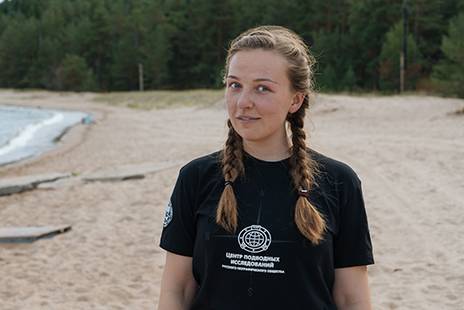Our team is finally at full strength, even young oceanauts from Orlyonokare here. The entire Underwater Research Center of the Russian Geographical Society made its way to the outer islands of the Gulf of Finland. After a month of working with submersibles and divers, we are finally ready to share our interim results.
Sonar specialists worked pretty much nonstop. We are able to observe objects found on the sea floor with the help of the most innovative equipment. We obtained images of 50 objects, with 22 of them – previously unknown shipwrecks.
Our divers thoroughly inspect bottom anomalies indicated by the multibeam sonar. Fieldwork is limited by the capricious Baltic weather. Despite the fact that it had been sunny and the weather was dry the entire month, strong winds and algal bloom resulted in decreased visibility, restricting the number of objects that could be reached by our RIBs (diving boats). Nevertheless, we have managed to examine around 10 sunken ships, including our personal favorite, an Imperial screw frigate Oleg. We have recovered a cannon; however, it is not a naval cannon but a landing gun. This landing gun was mounted onto the deck of the ship in a gun carriage.
The objects found in the waters surrounding Gogland can be divided into two groups: archaeological and wartime heritage (circa naval evacuation of Tallinn and throughout the Great Patriotic War).
Our archaeological discoveries include a 19th century English ketch. Its general cargo is unknown but several containers with tableware were found on the deck. Both hand-painted and factory-made sets, it’s as if they were made by a 19th century IKEA – stylish, functional, and minimalist. It almost seems like the crew themselves purchased it in order to sell it straight from the ship once they get to the port of destination. The stamps on these artifacts belong to two small English pottery manufacturers, so these items are most likely rare.
Now, let’s get back to our screw frigate Oleg. If visibility is too bad for creating a 3D model, it certainly does not affect underwater engineering activities. A URC RGS archaeologist gave the go-ahead to recover the bronze landing gun. One day of preparations was enough for one pair of divers to secure the cannon and lift it from 50m to 20m, where their teammates inflated a pontoon and pulled the landing gun up to the service. The rest of the way the nearly 500kg cannon was recovered using a self-propelled floating crane. The cannon survived the ordeal just fine. Just like it spent 149 years at the bottom of the Baltic Sea. The loading gun turned to be in great condition, so URC RGS’s own archaeologist and research diver Roman Prokhorov told the press that not much will be done with it in terms of conservation, as it doesn’t require a prolonged and painstaking process of restoration. In order to hand the artifact over to a museum, it is necessary to find the original blueprints and make a replica of the gun carriage that has not survived.
Some of the shipwrecks discovered are from the Great Patriotic War period. For example, BMO-318, a small armored guard ship. These small ships, called ‘victory ships’ for their improved navigational and combat performance, were built in the besieged Leningrad. Out of 64 ships, none survived. This is why we will be extra careful when exploring BMO-318.
Now, people are actively diving down to ВТ-519 (former steamboat Sigulda), which perished during the naval evacuation of Tallinn. In the 1960s, the bow of the 82m hull could be seen above the water near the southern cape of Gogland. Then it slid down the silt and is now sitting at the depth range of 10m (bow) to 20m (stern).
Dozens of other objects are currently being investigated by divers, robots, or manned submersibles.
Press secretary: +7 921 906 91 22 (Marina Davydova)







